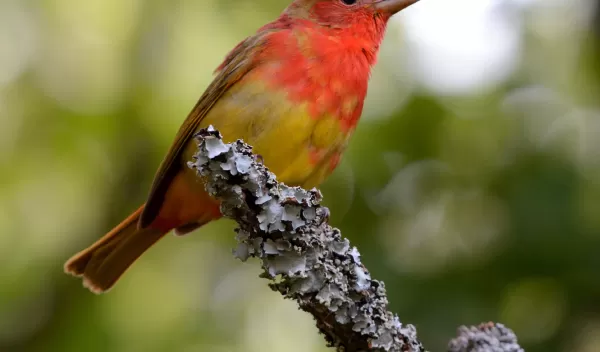
Seasonality of bird migration responds to environmental cues, scientists show
Find related stories on NSF's Macrosystems Biology program at this link.
The seasonality of bird migration is shifting in response to climate change. As a result, birds in the United States are arriving at their northern breeding grounds earlier in spring -- and may be departing later in fall.
Scientists supported by the National Science Foundation (NSF) made the migration shift discovery thanks to information aggregated from two sources: remote-sensing data from weather surveillance radar and ground-based data collected in citizen science databases.
Biology meets atmospheric science
Working with atmospheric scientists, biologists demonstrated that the combination of data yielded robust migration timing indexes.
The indexes reflect the movements of millions of birds of many species over large regions, says biologist Jeff Kelly of the University of Oklahoma, lead author of a paper describing the team's results in the journal Ecosphere, published by the Ecological Society of America.
"Understanding which environmental cues link migration timing to patterns of global change is key to forecasting future responses," Kelly said. "Novel data sources like the weather surveillance radar network and citizen science databases are enabling development of an index of migration phenology [cyclic or seasonal natural phenomena] that can be used to answer this question in future studies."
The combination of two novel data sources provides new insights into how, and when, migrations occur.
"These scientists combined citizen science observations with data from radar, satellites and weather predictions to understand the cues birds use in their migrations across continents," says Liz Blood, program director in NSF's Division of Environmental Biology, which funded the research through NSF's MacroSystems Biology Program. "The results show that birds migrate in time with temperature changes and with seasonal changes in the landscape."
Migration cues
Researchers say the migration indexes can help address a gap in scientists' knowledge about the cues birds use to fine-tune migration timing in response to climate.
They found that temperature likely plays a role in how migrating birds make adjustments in their timing and their routes. The researchers' findings also contradict the idea that a commonly used index of vegetation greenness is a useful cue for migration timing in some locales.
Results of the study, conducted in the eastern United States, expand on more traditional measures of migration timing based on a few individuals of a particular species.
Collaborators on the research include Todd Fagin and Eli Bridge of the Oklahoma Biological Survey; Kyle Horton, Phillip Chilson and Kirsten de Beurs of the University of Oklahoma; and Phillip Stepanian, formerly with the Advanced Radar Research Center.
The U.S. Department of Agriculture provided additional funding for the project.


